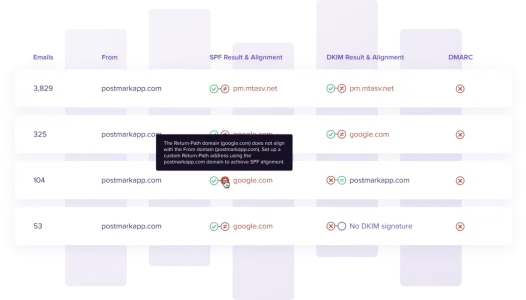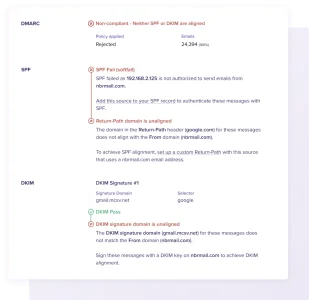I am working for one of Germanys largest forum operators. We send emails from our owned servers colocated at a Tier 1 datacenter, connected via RIPE registered PA address space.
We usually don't have DMARC set up and only semi-recently started to use DKIM for all projects.
From my experience (about 15 years), the most important thing for a MTA is correct hostname configuration, eg. the FQDN presented in
HELO /
EHLO should resolve to the source IP address in forward lookup and and a reverse lookup on that IP should match the FQDN.
If this is not the case it would be pretty problematic to have outgoing mails accepted by users MX; large providers like United Internet (GMX, Strato, Ionos, etc.), Deutsche Telekom, Google, Microsoft, etc. would reject it right away.
IMHO proper rDNS is the basis and way more important than SPF and DKIM (let alone DMARC).
Wether the FQDN is smth. "fancy" like
mail.mydomain.com or
162-105-133-213-static.hetzner.de is less important and usually doesn't totally block delivery, though chances are pretty high that such automatically provider generated FQDNs will increase spam score.
@Tracy Perry
You do use Hetzner?

docs.hetzner.com
Many mail servers only accept incoming emails if the sender's IP address has a reverse DNS entry.
[...]
The reverse DNS entry should not take the form of an automatically generated name, such as <162-105-133-213-static.hetzner.de>; spam filters might identify these as "spam".
So realistically you wouldn't want to use such an automatically assigned entry and if it can't be changed it would be quite a challenge to achieve good delivery rates with such a setup.
Missing SPF will not block delivery but an incorrect record most certainly will block delivery to some extend.
Furthermore SPF does cause problems with forwarding (unless all intermediate servers implement SRS which also has its own problems).
While pretty much all major providers do support DKIM checks by now it is even less important and like SPF not having DKIM set up will not block delivery but an incorrect setup most certainly would at least increase spam score.
The least important thing is DMARC which certainly does help to protect against abuse and to monitor delivery performance but doesn't (yet?) have that much impact on score.
TL;DR
rDNS > SPF > DKIM > DMARC
Ideal Setup
Custom FQDN with PTR on your own domain that also matches envelope and
From using a clean IP that is exclusively used for email delivery, proper SPF, DKIM (and DMARC if you want the extra "icing" on top and BIMI with VMC if you have too much spare money).
Just my 0,02 €



